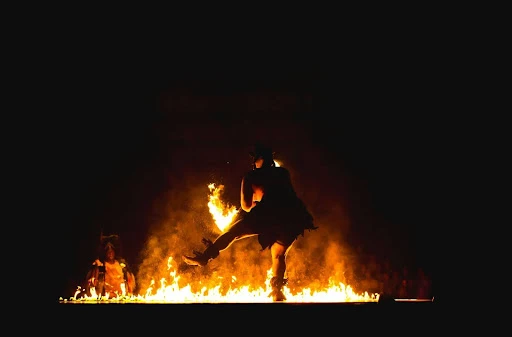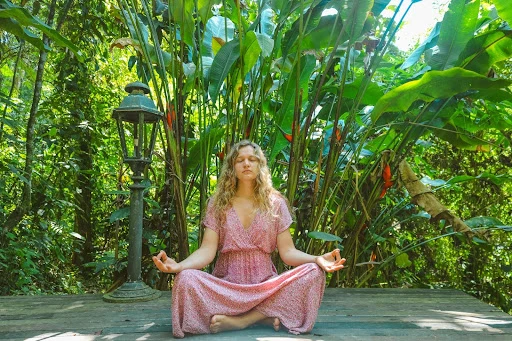
Are you curious about the history of Matias Romero mushrooms? Then you’re in the right place to begin your journey.
Matias Romero is a rare psilocybin strain and a remnant of ancient indigenous traditions. Its name comes from the town it grew near: Matias Romera, Oaxaca.
This sacred shroom played a role in spiritual, ceremonial, and healing practices across Mesoamerican cultures. It’s been a part of humanity’s search for meaning for millennia.
In this article, we explore how Matias Romero mushrooms and other psilocybin varieties were used in Mazatec, Zapotec, Aztec, and Mixtec rituals and ceremonies.
We’ll also guide you through the cultural roots of ancient mushroom use, their rediscovery in the west, the impacts of colonial suppression, and the renewed call for cultural respect today.
Long before magic mushrooms entered the western world, they were at the heart of ceremonial life in Mesoamerica.
The spiritual use of psilocybin in culture was widespread. The Mazatecs weren’t the only ones to dabble in it. The Mixtec and Zapotec people also had traditions surrounding these mushrooms and considered them sacred.
For Oaxaca’s indigenous people, especially the Zapotec, Mazatec, and Mixtec communities, psilocybin mushrooms weren’t novelties. They were sacred tools for divination, healing, and communication with the spirit world1.
Among the Mazatec, shamans would take psilocybin mushrooms and guide nocturnal healing ceremonies known as veladas. The Matias Romero strain was among those consumed, as it grew near the town of Matias Romero in Oaxaca.
According to Maria Sabina’s widely studied rituals, magic mushrooms were treated with deep reverence. These niños santos or “little saints” helped diagnose illnesses, gain spiritual insight, and locate lost objects or people2.
Despite mushroom suppression because of Spanish colonization, many codices and stone carvings survived, showing mushroom designs linked to transformation, vision quests, and deities3.
A review paper from 2023 supports the understanding that psilocybin’s effects on the serotonergic system deliver deeply meaningful and mystical experiences often described as emotionally healing, ego-dissolving, and spiritually significant.
These experiences align with the purposes of various Oaxacan traditions and their sacred mushroom use.
It’s essential to recognize this ancient wisdom in the quest to discovering psilocybin’s full potential. This knowledge has been passed down through generations from the hills of Oaxaca and remains alive in its people’s songs, ceremonies, and stories.
The long and far-reaching psilocybin history highlights one main realization: these sacred mushrooms were worshipped as much as they were consumed.
Psilocybin mushrooms weren’t just used for recreation or medication in ancient Mesoamerica. They were deeply rooted in the very fabric of religious and ritual life, acting as indigenous people’s direct lines to the divine.
An example of this can be found in the Mixtec codex called Vindobonensis Mexicanus. It’s a richly illustrated manuscript dating back to pre-Columbian times that shows what many scholars interpret as mushroom imagery.
This mushroom imagery often shows connections to ancestral figures, cosmological cycles, and gods. While some may argue they’re just random decorations, they suggest that ancient mushroom use was central to lineage, rebirth, and death rituals.
There’s even earlier physical evidence of psilocybin in culture: the mushroom stones. These small sculptures were found in Guatemala. They’re carved in the shape of mushrooms with zoomorphic or anthropomorphic faces4.
These mushroom stones date as far back as 2,000 years. Their ceremonial significance is widely accepted.
Researchers argue they were used in rites to communicate with the spiritual realm or to honor deities associated with fertility and agriculture2. Many experts support these interpretations of sacred mushrooms.
Insight was at the core of these rituals. Magic mushrooms like Matias Romero helped users connect with gods, reaffirm cultural identity, and explore personal and collective trauma5.

The Aztecs also had psychedelic traditions involving strains like Matias Romero mushrooms. They referred to them as teonanácatl, meaning flesh of the gods6.
Priests regulated the use of teonanácatl, reserving them for important rituals like spiritual initiations and coronations. Chanting, fasting, bloodletting, and drumming would accompany these ceremonies, underscoring the seriousness placed on these psychedelic traditions.
We’ve seen how interest in ancestral plant medicine is growing. More people want to understand psilocybin’s ceremonial roots for healing, recreation, spiritual growth, and reconnecting with the deeper traditions behind their use.
Insights into the history and cultural significance of sacred mushrooms continue to shape how modern practitioners approach these rituals with more respect and intentionality.
Indigenous Mesoamerican cultures revered psilocybin mushrooms for centuries. They were woven into the healing, religious, and social fabric of communities like the Mixtec, Zapotec, and Mazatec.
The arrival of the Spanish in the early 16th century brought a shift in the spiritual lives of indigenous Mesoamericans. Colonization came the suppression of their way of life7.
The Catholic Church viewed indigenous practices as hearsay, branding sacred mushrooms as the devil’s work. They went from being a highly respected spiritual tool to a target of destruction.
Spanish chroniclers and priests documented psilocybin ceremonies with fascination and horror. The Florentine Codex became one of the most important sources for detailed knowledge on these ceremonies and the mushrooms.
Franciscan friar Bernardino de Sahagún compiled this codex, including detailed (and disapproving) accounts of mushroom use during Aztec religious ceremonies.
Sahagún described how participants consumed teonanácatl, entering states of intense visions, weeping, or laughter. He also condemned these effects, considering them harmful and aiding in their suppression.
Following Sahagún’s chronicling, colonial authorities banned psilocybin use. They destroyed sacred texts and dismantled temples. However, this didn’t eradicate psychedelic traditions, but rather drove them underground.
Indigenous communities across the Oaxaca region secretly preserved their sacred mushroom rituals. Their ceremonies moved from open temples to mountain caves and private homes.
Language around mushroom use became coded, and sharing of knowledge was limited to apprentices and trusted family members.
By carefully concealing their activities, Oaxaca’s psychedelic traditions were able to survive through centuries of religious persecution and cultural erasure8.
Maria Sabina is one remarkable example of the survival of psilocybin and indigenous Mesoamerican practices. She was a Mazatec healer born in the late 19th century, in a world where ancient mushroom use was hidden in the shadows9.
Her grandfather passed on his ritual knowledge to her, where she would eventually lead veladas with psilocybin mushrooms. Her story highlights the depth and resilience of these traditions.
While pushing these practices underground, colonial repression also created a lasting stigma that would extend to the modern era. Many indigenous people remained hesitant to speak openly about mushroom use even in the 20th century, fearing ridicule or reprisal.
The cultural silence has only started lifting in recent decades, as scientific and spiritual interest in psilocybin history returned.
As the Western world rediscovers psilocybin’s potential, we must acknowledge the communities that kept these traditions and knowledge alive.
The people of Oaxaca protected magic mushrooms through centuries of oppression. They risked everything to maintain their beliefs and culture, allowing us to explore the sacred mushrooms’ healing and self-discovery abilities.
Thanks to their sacrifices, you’re able to explore the stories of magic mushrooms like:
While underground, psilocybin mushrooms were still thriving in indigenous communities across Oaxaca by the early 1900s. They remained hidden from public knowledge because of colonial repression.
However, the arrival of R. Gordon Wasson in 1955 changed that. The American banker and amateur ethnomycologist journeyed to Hauatla de Jiménez, Oaxaca, a remote Mazatec town. Here, he met Maria Sabina and participated in a traditional velada10.
While Wasson is often credited with “discovering” psilocybin, it wasn’t a new finding. It was a reintroduction. It was simply a hidden truth for indigenous people across Oaxaca.
Sabina gave Wasson magic mushrooms, guiding him through a deeply introspective and spiritual experience. After this, he returned to America and published an article in Life magazine called “Seeking the Magic Mushroom”.
This article became an iconic piece, introducing millions of Westerners to psilocybin and ancient mushroom use for the first time. That moment helped catalyze the psychedelic movement in the west, spurring scientific inquiry8.
Albert Hofmann confirmed the biochemical basis for the mushrooms’ psychoactive effects. He was a Swiss chemist, known for synthesizing LSD, who isolated psilocybin and psilocin from Psilocybe mexicana, one of the species used in Mazatec rituals11.
This confirmation opened the door for early psychiatric studies.
Several strains of psilocybin mushrooms were catalogued during this surge of curiosity, including some reportedly found near the town of Matias Romero, Oaxaca.
While less globally recognized compared to Psilocybe cubensis or Psilocybe mexicana, Matias Romero mushrooms became a regional point of interest. Foragers and ethnobotanists studying psilocybe diversity were obsessed.

Recent years have seen the reemergence of psilocybin mushrooms at the center of spiritual exploration, mental health research, and wellness culture. While the excitement around these fungi grows, so does the importance of respecting their deep-rooted indigenous origins.
Sacred mushrooms like Matias Romero mushrooms have been used with respect for millennia. Various Mesoamerican cultures viewed magic mushrooms as a sacred medicine. They used them intentionally, guided by trained shamans along complex ceremonial frameworks.
Unfortunately, Western curiosity has led to many misrepresentations of these traditions. It often removes psilocybin from its historical and cultural context, reducing it to a chemical compound rather than honoring its sacred role.
However, various organizations and individuals are working to change that (and the number’s growing). Fair-trade cultivation, ethical sourcing, and educational platforms are helping the narrative shift to cultural respect.
That means acknowledging those who preserved these traditions. We must work to keep their practices alive and protect their knowledge and rights.
At Good Moods, we contribute to this movement by promoting respectful, intentional use and creating products that celebrate heritage and nature. We help you approach psilocybin as a bridge to deeper awareness and spiritual connection.
This act is a step toward honoring the past and reimagining the future of psilocybin in culture.
Matias Romero mushrooms and the traditions surrounding similar strains have endured the test of time and suppression. They have a rich and deeply rooted history in Mesoamerican culture, dating back millennia.
The rituals and religious practices involving these sacred mushrooms withstood the Spanish Inquisition. The indigenous people displayed inspiring resilience, preserving their culture despite seeing their temples dismantled and texts destroyed.
Since their introduction to Western society, magic mushrooms like Matias Romero mushrooms have sparked the curiosity of scientists, spiritualists, and recreationists.
We’ve seen leaps in our understanding of these sacred mushrooms. This knowledge highlights the importance of exploring psilocybin through an informed lens.
Ready to explore the world of psilocybin? Browse the mushroom products at Good Moods today and read our blog to learn more about ethically sourced psilocybin and the many benefits it offers.
Pallardy, R. (2019). Albert Hofmann | Swiss chemist. In Encyclopædia Britannica. https://www.britannica.com/biography/Albert-Hofmann
About Good Moods
Good Moods Inc. | 70 SW Century Dr Bend, Oregon 97702 Sitemap Blogs
You must be 21 years of age or older to make a purchase from this website. All Good Moods plant medicine products are for healing purposes only.